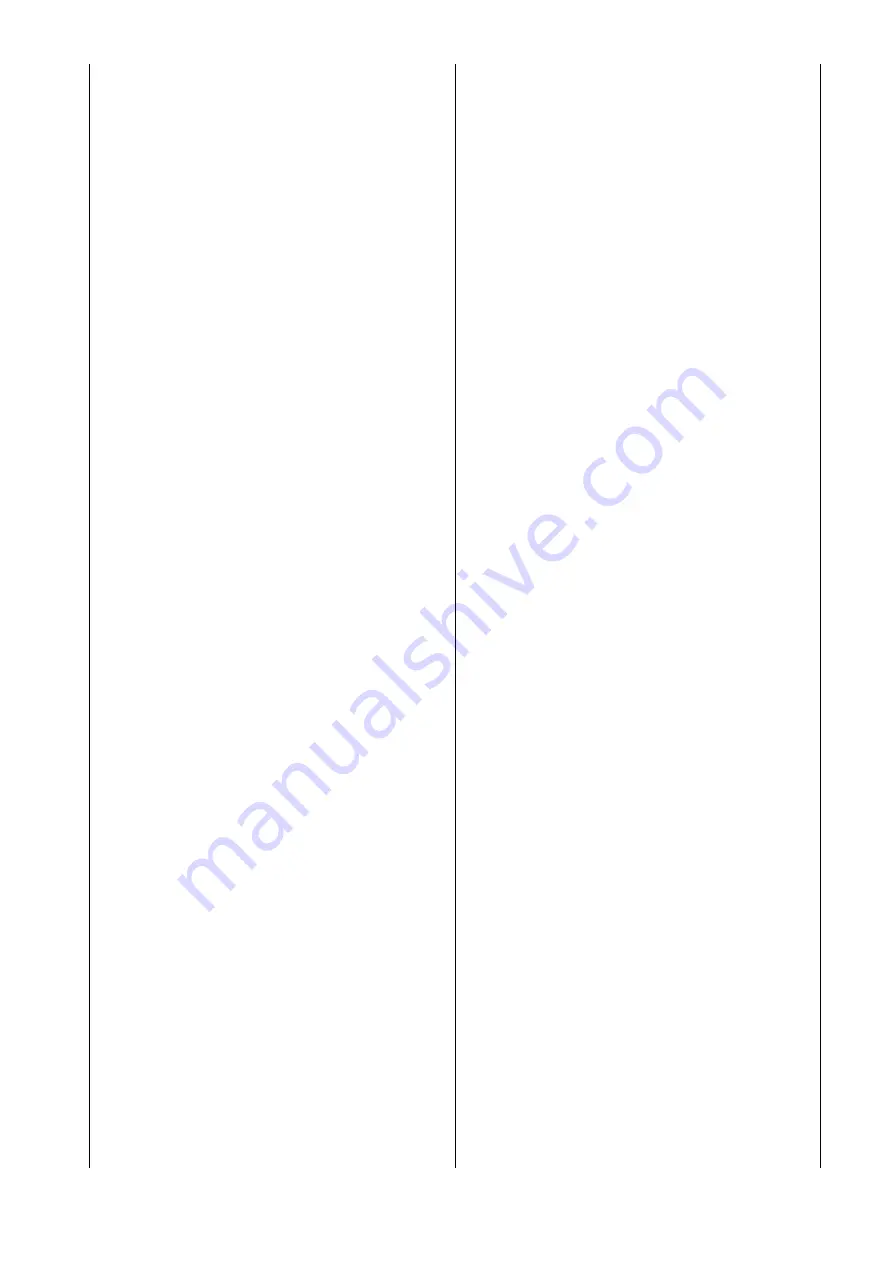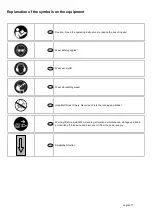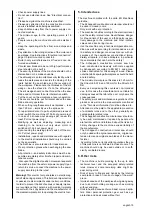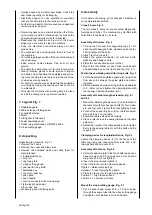
22 english
11. Implementation
Please read the safety information before implemen-
tation.
The implementation of the machine is only admiss-
able when protection and safety facilites have been
installed completely.
Put the machine on a stable, even floor. If necessary
attach through the bottom through the holes to the
frame valves. (screws/nails)
After connection to the power supply your scheppach
construction circular saw is ready to operate.
Longitudinal cuts, Fig. 11
• Use the fence for parallel cuts.
• For working smaller work pieces (less than 120 mm)
use the push stick and the low fence side.
• Attention: Do not use a defective or broken push
stick or push handle any more (risk of injury).
• A defective push stick and push handle must be re-
placed by new ones.
• Immediately dispose of any defective parts.
Cross cuts, Fig. 11.1
• Use the cross-cutting gauge for cross and angle
cuts.
• It is ready for use by lifting it onto the saw table.
• The setting scale reaches from 0° to 90°.
• In order to achieve a precise cut, press the wood
against the fence surface when sawing.
• When not used, lower the cross-cutting gauge at
the side.
Wedge-cutting gauge, Fig. 11.2
• The cross-cutting gauge is also used for cutting
wedges.
•
To this purpose, set the swinging part to 0° and fix
it with the adjustment handle.
• Place the wood into the recess and saw it carefully
exerting a uniform pressure.
• Switch off the machine and remove the wedges.
• Caution: Feed the work piece only with your hand
on the cross-cutting gauge. Do not hold the work
piece by hand.
Changing the sawblade, Fig. 12.1 and 12.2
Attention: Pull the power plug!
• Screw out the two upper bolts M 8 (1) from the lower
sawblade guard.
• Swing down the sawblade guard. Release the ten-
sion nut (M 20, left-hand thread) and fix it with the
holding key (Fig. 12.2).
• Wear gloves to protect your hands.
•
Remove the sawblade and fit a now one.
• Only mount a well sharpened, crack-free and not
deformed sawblade.
•
Tighten the tension nut, fixing it with the holding key
(left-hand thread!).
• Raise the lower sawblade guard, re-insert the two
bolts M 8 and tighten them.
• After every sawblade change, the riving knife must
be adjusted anew - see Setting the riving knife Fig.
2.
12. Maintenance
Switch the motor off and pull the power plug before
doing any maintenance and cleaning work.
After servicing the machine, all guards and safety de-
vices must be refitted.
• The construction saw, including the electric motor,
are maintenance-free to a far extent. An exception
are the sawblades, table inserts and brake linings of
the electric motor (approx. 14,200 switching actions)
that are subject to natural wear and tear.
• The sawblade must stop within approx. ten sec-
onds. If necessary, the worn table insert must be
replaced.
• Brake linings may only be replaced by specialists.
Cleaning
Attention: Pull the power plug!
Wear gloves (risk of cutting).
• Always wear goggles for cleaning to protect your
eyes.
• Remove dust and dirt at regular intervals.
• Keep the protective sawblade box clean from scrap
wood and saw dust cloggings.
• For a good cleaning compressed air or a hand
broom are recommended.
• Keep the table surface free from resin.
• Caution: Do not use any cleaning agents on the
plastic parts. We recommend a mild rinsing agent
on a moist cloth.
Service information
Please note that the following parts of this product
are subject to normal or natural wear and that the
following parts are therefore also required for use as
consumables.
Wear parts*: Carbon brush, saw blade, batteries,
table liners, sliding stand, push handle, V-belts
* Not necessarily included in the scope of delivery
















































